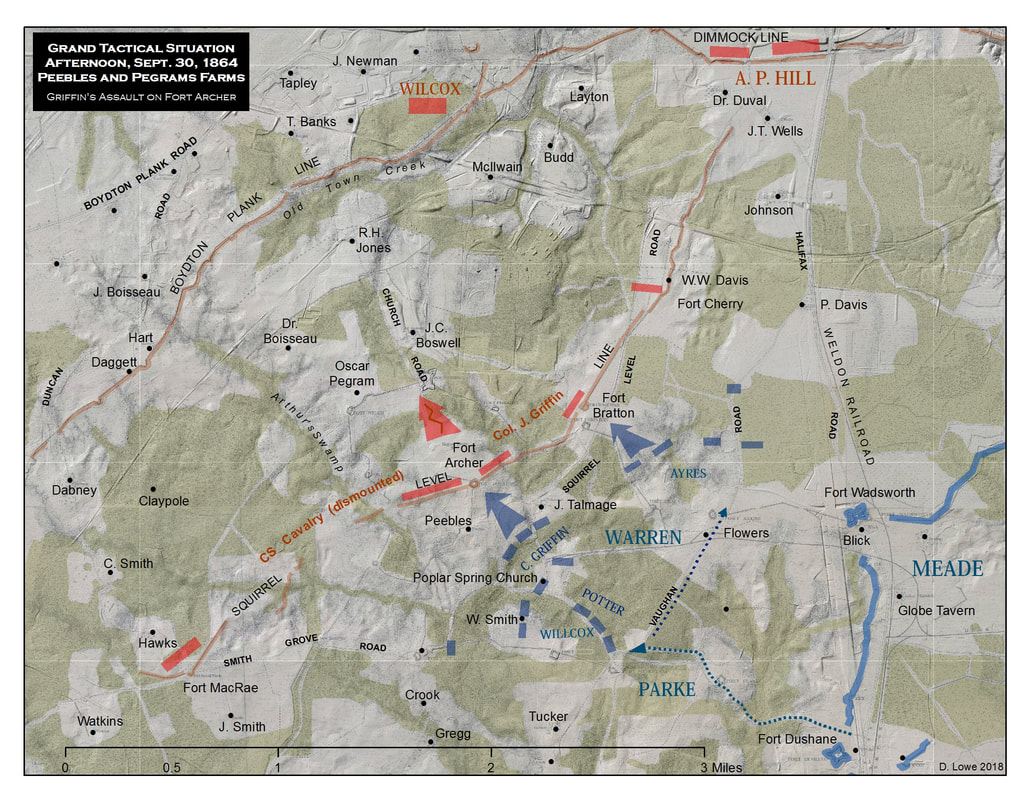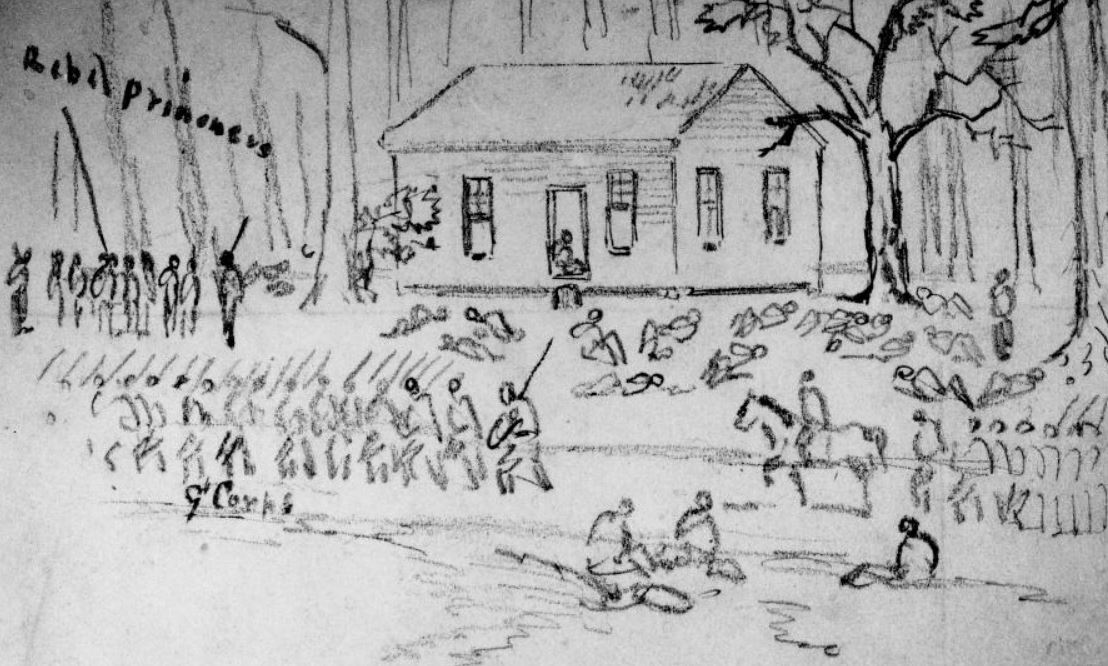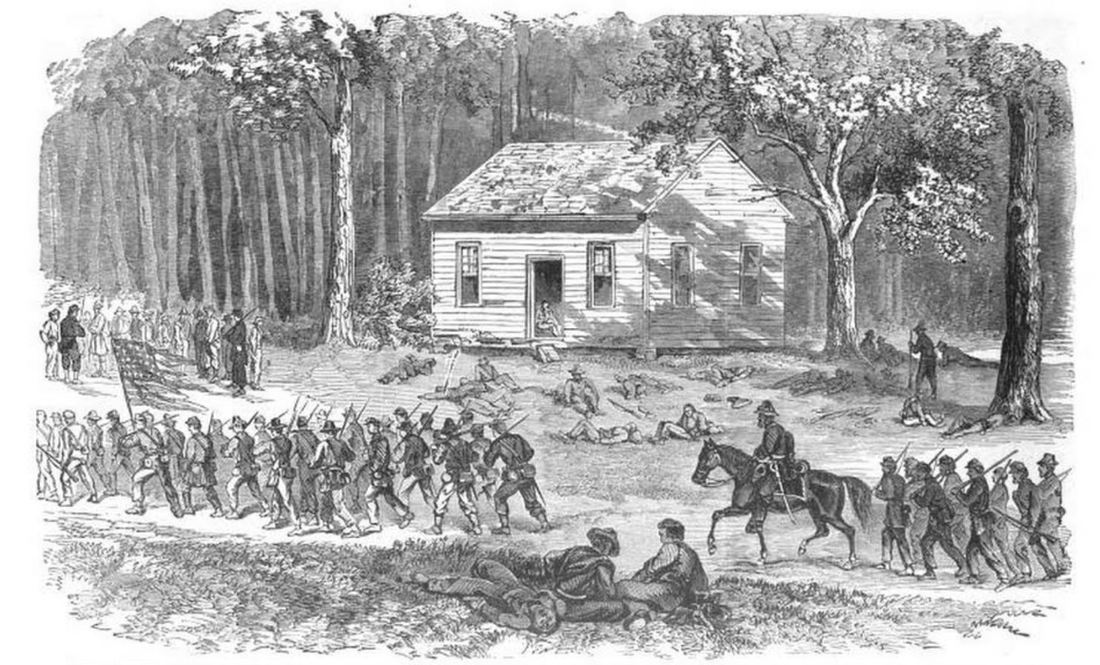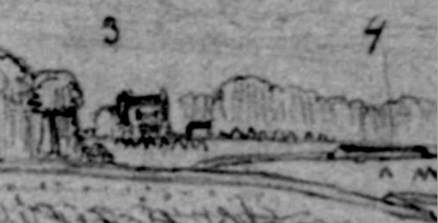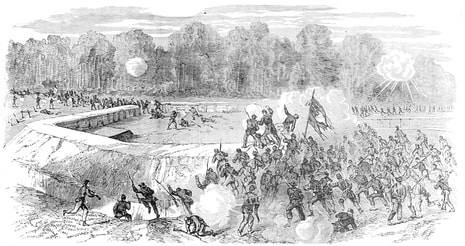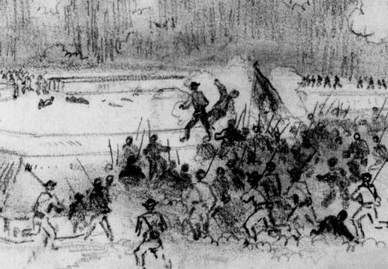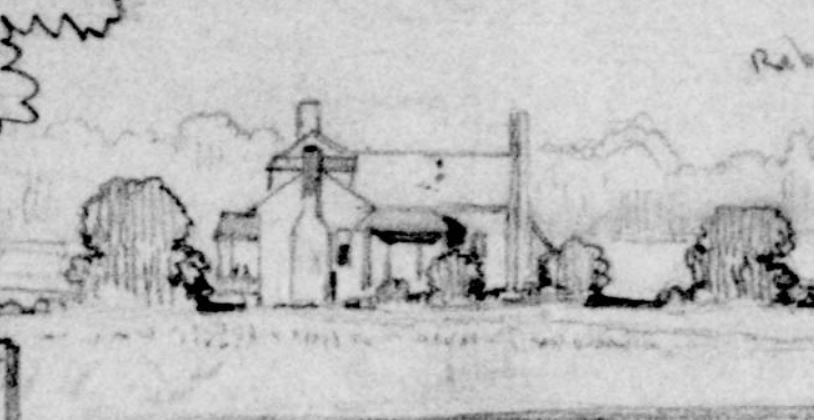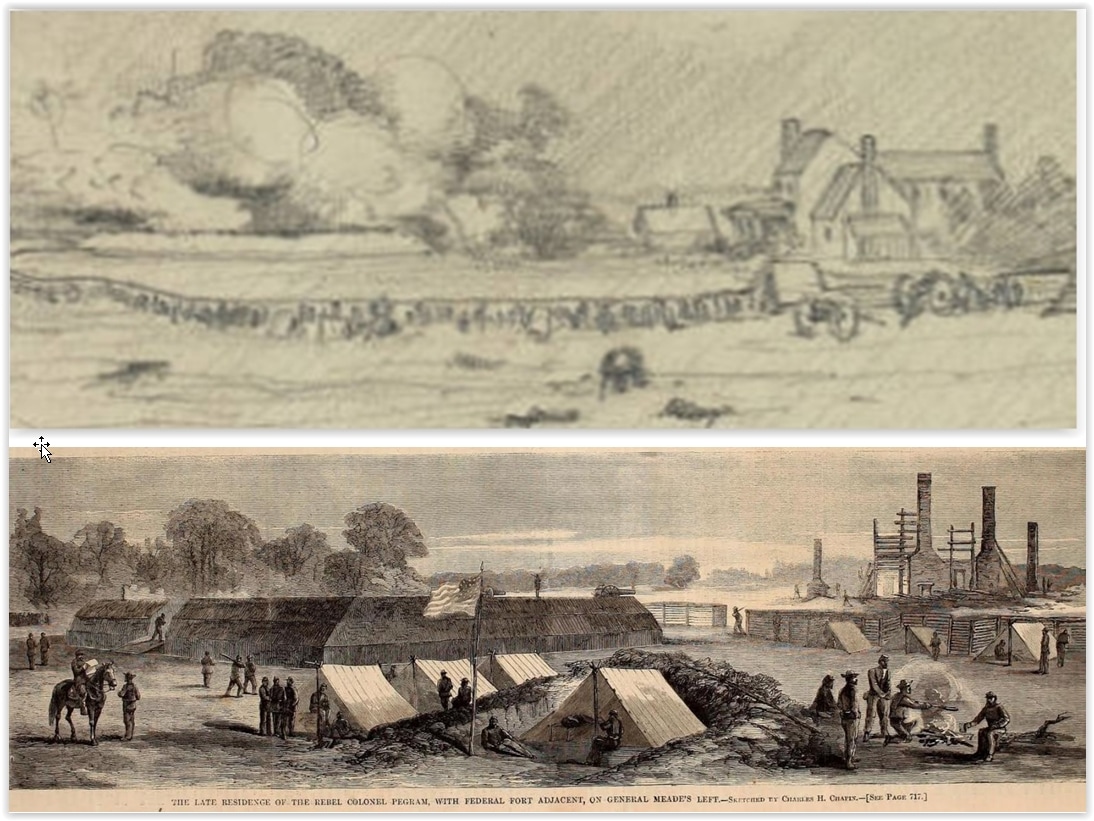Poplar Springs Church, Peebles Farm, and Pegram's Farm
On September 30, 1864, about noon, two divisions of the V Army Corps under Maj. Gen. G. K. Warren, and two divisions of the IX Army Corps commanded by Maj. Gen. Parke, moved out of the defenses along the Weldon Railroad to test the strength of a newly built Confederate line that ran along the Squirrel Level Road. Thus began the Southside thrust of Grant's Fifth Offensive, intended, eventually, to cut the last supply lines into the city of Petersburg. A major objective was to cut the Boydton Plank Road. Deep ravines and heavily wooded terrain mostly funneled the advancing column along a single corridor -- the Poplar Spring Church Road.
Poplar Spring Church was one of the first landmarks noted by Federal soldiers as they marched past the nondescript building. Special artist Joseph Becker accompanied the Ninth Corps as it passed through the woods around the church; his sketch--perhaps, the only depiction of the church--was afterwards turned into a woodcut for publication. Within a week, the church was described as "ruins" on a IX Corps map. No trace of the church remains today.

NAID:225809266. "Untitled map of Section of Country Southwest of Petersburg, Virginia, photo-reproduced for Engineer Department by L. E. Walker, U.S. Treasury Ext., Jan. 16, 1865. One of eleven copies of the area centered on the Poplar Grove Meeting House, showing locations of Peebles' and Pegram's farms. North is to the right of the page.
|
The advancing Federals readily pushed aside Confederate skirmishers, and after emerging from the woods around the Poplar Grove Church, discovered the cleared area of the Peebles farm dominated by a Confederate redoubt, called Fort Archer. Maj. Gen. Charles Griffin brought up his Fifth Corps division and organized it for an assault on the earthwork. It was a formidable looking obstacle but only lightly manned by dismounted Confederate cavalrymen and four pieces of artillery.
|
The attack on Fort Archer went forward as a swarm, as individual regiments of Gwyn's and Gregory's brigades followed their own instincts. Blue coats pressed over and through the incomplete abatis and converged on the redoubt, jumped into the ditch, and clambered up the parapet. Col. Norval Welch at the forefront of the 16th Michigan Infantry was shot in the head and thrown backward from the breastworks. Three of the Confederate guns and most of the defenders escaped through the sally port and were chased up Church Road. One three-inch rifle, taken from the Federals at Reams Station the previous month, again fell into Federal hands. The fort was afterwards reversed and named for Capt. J. H. Wheaton, 1st Michigan Infantry, who was killed in the fighting.
In the meantime, Ayres Division, V Corps, pushed up the Squirrel Level Road, protecting the right flank of the corps, and reached out across a patch of open fields to capture lightly defended Fort Bratton. Some isolated regiments continued north along the now abandoned Confederate line until meeting stiffer resistance near Fort Cherry.
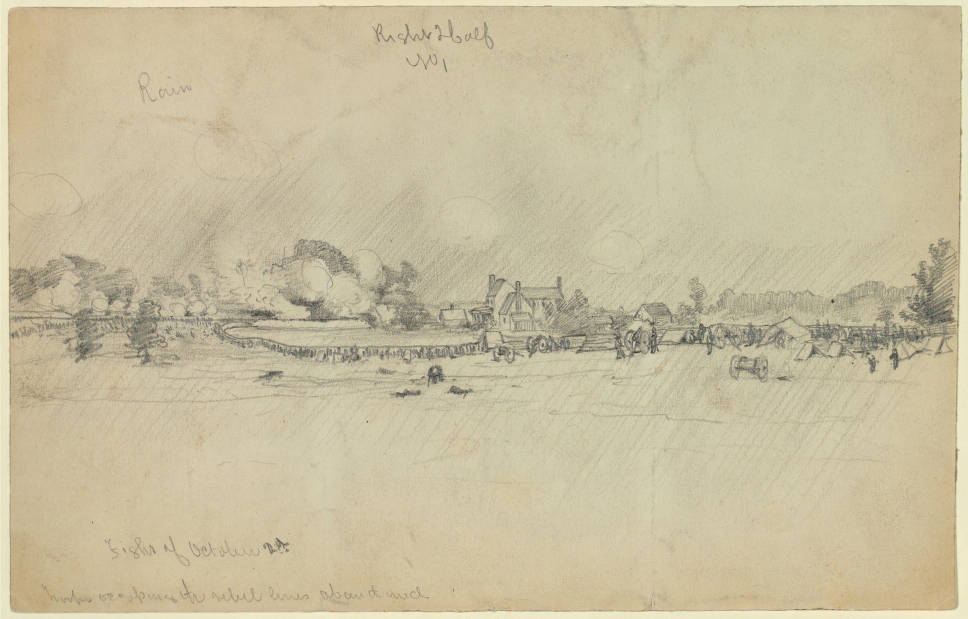
"Fight of Oct. 2d, 1864," artist unknown, in collection of art sent to Frank Leslie's Illustrated newspaper at the New York Historical Society. The sketch was not published. Inscribed at lower left: "Fight of October 2d./troops occupying the rebel lines about mid." That is likely the Pegram house in the mid-ground. The house and outbuildings were afterwards burnt to the ground.
Pegram house ruins after the fire as sketched by C. H. Chapin and published as a woodcut. Fort Welch (left) was built on the site. Fort Welch survives in very good condition. Of the Pegram house, there is no trace but for the cemetery. It is a safe bet that the bricks were soon looted to provide chimneys and floors for the soldiers' winter quarters.
Fort Archer/Fort Wheaton is preserved within the battlefield park. Page updated 06/01/2024

